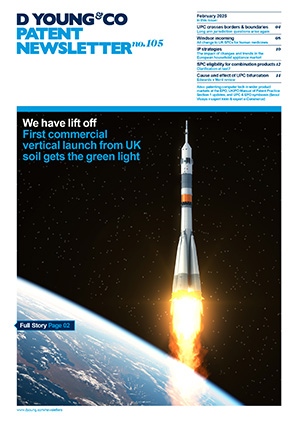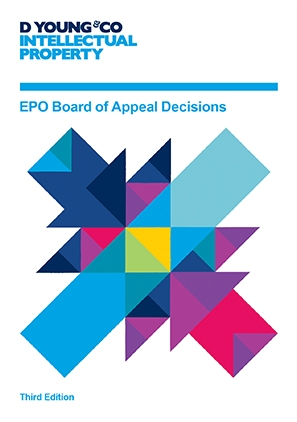Patentability of accessibility inventions at the EPO
With many of us spending an increasingly large proportion of our time interacting with electronics, accessibility is becoming more and more important so that everyone has the opportunity to benefit from the rapid improvements in tech. In this article we examine the patentability of inventions relating to accessibility at the European Patent Office.
What is meant by accessibility?
Accessibility of technology has traditionally meant providing mechanisms to allow a person who, due to an impairment, would not normally have access to the technology or the content provided by that technology. So, for example, for a person who has impaired vision, turning visual communication into something auditory, and for someone who has impaired hearing, turning auditory communication into something visual.
However, it is arguable that in the future, accessibility of technology may start to include one of the most challenging areas of technology; how to deal with differing levels of cognitive ability. This is not necessarily linked to intelligence, but is rather related to an individual’s ability to deal with an increasing level of complexity associated with interacting with technology. So, for example, how to use certain gestures when interacting with a device that are seen as more intuitive for users.
EPO practice
The relevant area of EPO practice is around the assessment of inventive step and in particular, establishing a technical effect associated with particular technical features. This is important because, whilst a claim can include a mix of features that do and do not provide a technical effect, the only features that can contribute to an inventive step are those that have a technical effect.
In one decision (T1958/13) the notion of a credible technical effect was used to say that a claimed feature did not contribute to an inventive step. This case has been increasingly cited by examiners in this area of technology. The claims in this case included a touch screen display and a controller configured for detecting gestures. The appellant argued that a so-called “single-drag gesture” had the effect of making text editing more convenient or simpler for the user and thus better compared to the solution provided in other prior art. The Technical Board of Appeal held that such gesture definition, whether deemed technical or not, was regarded as a user specific fact that had to be taken into account in the user interface (UI) design belonging to the conception or motivation phase prior to an invention. In other words, although the purpose of the effects may have been technical since they provided tools which serve or assist the user, the question whether they actually achieved their goal depended exclusively on the subjective user skills or preferences (para 2.2.5 of the decision). Therefore, the Technical Board of Appeal held that these effects could not be regarded as objectively credible technical effects for the purposes of formulating an objective problem to be solved.
This raises an interesting question. What if the user skills were not subjective or were not preferences? For example, what if the user had an underlying medical condition that meant the user simply could not operate the technology if the technology did not have this feature?
In the case that the invention provided a solution so that a person with an underlying medical condition could actually operate the technology, the question whether the tools achieved their goals again depends on the ultimate user. However, in this instance, if the underlying technology was described as allowing the person with a particular underlying medical condition to access and use a particular technology, then whether the tools achieved that goal would not depend exclusively on the subjective user skills or preferences as in T1958/13. Rather, it would depend on whether the user with the underlying medical condition could use the technology or not.
This means that where improved accessibility for a person with a particular impediment or medical condition is the ultimate goal of the invention, this should be clearly stated in the application. This would allow the European Patent Attorney the latitude to argue that the decision reached in T1958/13 was not relevant. Of course, there may be other advantages to people who do not have such an impediment, and these may be stated. However, it is important that these other advantages are not the only advantages mentioned in the application.
Where the sole purpose of the invention is to make the technology easier to use, the situation is more complicated. In this case, the question whether the tools actually achieved their goal does depend exclusively on the subjective user skills or preferences. This makes T1958/13 a possible issue to achieving a granted patent for what may be quite a valuable feature in a product.
In the decision, the Technical Board of Appeal stated (in para 2.2.6) that the features of the invention are typically “defined based on experimental or empirical studies… with the aim of reducing the user’s cognitive load…rather than being directed to purely implementational improvements of a touch-screen device”. The Technical Board of Appeal gave some examples that it [the Board] considered to be such improvements. The Technical Board of Appeal noted that such implementational improvements may include processing load, gesture recognition speed or the like. In other words, the Technical Board of Appeal really wanted to see improvements to the functioning of the device itself rather than improvements in the gestures performed by a user of the device.
The rationale is that, as noted above, the Technical Board of Appeal felt that such a gesture definition as a user specific fact to be taken into account when designing a user interface. This design would be normally done prior to the “invention” phase and there was nothing in the implementation of the invention that is advantageous to the operation of the device. Therefore, the Technical Board of Appeal held that such a high level definition of a gesture cannot contribute to an inventive step.
This does mean that under European practice, it may be difficult to obtain a granted patent for a claim to a gesture or some other accessibility mechanism per se that makes a device easier to use. To improve the prospect of obtaining a patent, it is important to ensure that your claim includes some features that define the way the gesture or other accessibility mechanism is implemented on a device and further, to explain how this implementation is technically advantageous over the prior art. For example, in the above case, if there was a way in which the single drag gesture was implemented in the device that allowed less processing power to be used by the device, then a claim to this implementation would probably have been allowed.
Conclusion
This means that where the invention is provided solely to improve the accessibility of the device for a user by making interactions with the device more intuitive, it is important to focus on any implementational improvements to the device when drafting the application rather than focussing on improvements for the user. It is quite clear from T1958/13 that the EPO requires implementational improvements to be claimed rather than simply a definition of a particular gesture or the like that improves the accessibility of the device for a particular user.


